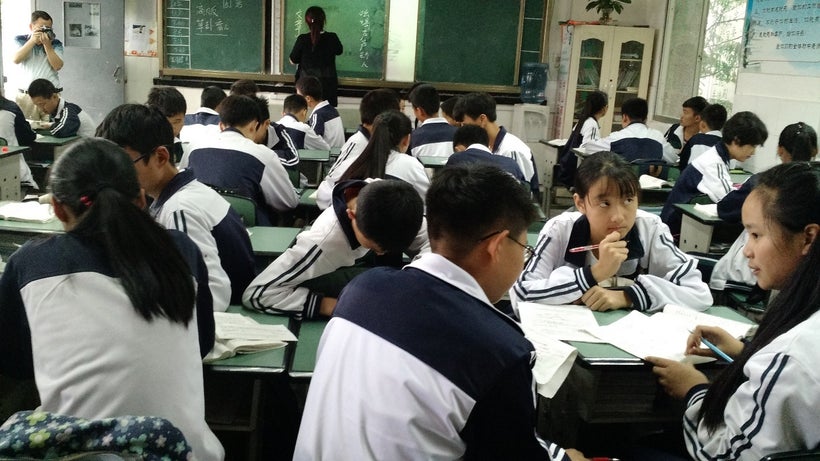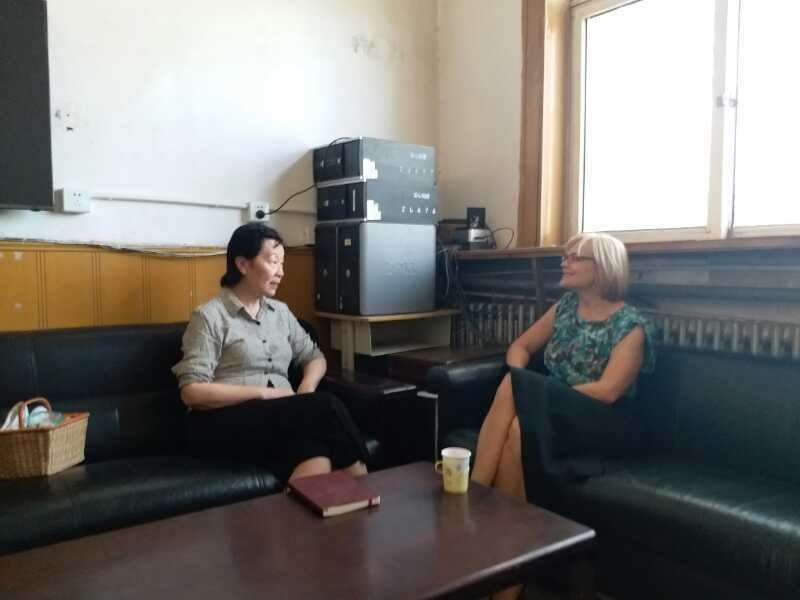Changing China: Education Reform in the World’s Largest System
By: Kelly Davenport and Elliot Weinbaum
There has been a great deal of press in recent weeks about the future direction of China and its government. With the Communist Party’s 19th National Congress in Beijing, followed by President Trump’s visit, much of the discussion in the U.S. media has focused on China’s potential positions on international affairs, military strategy, and economic policy. Unfortunately, little attention has been given to the changes underway in China’s educational system. But alongside the other strategic shifts, the tremendous educational changes taking place—and their close connection to the nation’s vision for the future—will play a key role in China’s destiny.
As educators, we were interested to learn about these educational changes and through Eisenhower Fellowships had the opportunity to spend this past June in eight cities across China. We met with national and provincial education leaders, professors in schools of education, principals, teachers, students, and heads of non-governmental organizations. We spoke with all of them about the changes in elementary and secondary education in China. In the sections that follow, we will introduce you to three people and places that illustrate three essential transformations taking place in China’s education system—curiosity, critical thinking, and inclusion. These three shifts are positioning China to move, as we often heard, from an economy where things are “made in China” to one where things are “designed in China.” This direction suggests that in the future, Chinese children will compete with their Western counterparts on much more familiar terrain, with experiences and habits of mind that are more similar to those in the U.S. than ever before.
Curiosity
As China achieves its 20-year goal (set in 1998) of providing free education to all 300 million students in first through ninth grades, inequities in public education are increasingly apparent. Much like the U.S., China’s education system relies primarily on a regional tax base for funding, resulting in schools whose physical environments and materials vary widely. Shirley Pan, a former investment banker, recognized that these kinds of inequities tend to stifle natural curiosity among children in schools with few resources and are likely to limit their future options. Understanding the importance of curiosity, an attribute not previously encouraged in China’s education system, Pan created the Adream Foundation, with the mission to cultivate curiosity in children in poor communities across China.
Adream builds special classrooms, or “dream centers,” inside traditional schools. Each dream center is equipped with books, brightly-colored furniture, computers with internet access, and a podium from which students are encouraged to share their ambitions. Specially trained teachers transform from lecturers and disciplinarians into “guides,” helping students navigate innovative projects that articulate who they are, where they want their careers to lead them, and how they plan to get there. Inside the dream center, there is no judgment or correction. Excitement, curiosity, and passion—new and emerging values for the Chinese education system—are encouraged instead. Adream has already built 2,700 dream centers across China, serves more than 3 million children, and is growing fast.

Critical Thinking
The Taiping Middle-Senior High School educates about 1,400 students in a poor rural community 40 minutes outside Chengdu in Sichuan Province. This school has adopted a new mode of instruction known as Dao Jiang Ping or DJP, promoted by Wang Fuying, a master teacher in the region. This approach gives students unprecedented opportunities to ask questions, encourages students to collaborate and problem solve, and requires teachers to engage in ongoing evaluation of their instruction and impact. During a visit to a tenth grade Chinese literature class, the teacher animatedly posed questions about the text, and asked student volunteers to perform sections of the text in ways the characters may have sounded. Students worked in small groups to discuss which elements of the author’s experience were similar to their own cultural background and which were different.

Inclusion
Forty-two miles from the center of Beijing, in the city’s Daxing District, sits the Dandelion School. Founded in 2005 by Dr. Zheng Hong, Dandelion is a residential school for low-income migrant children whose families have left China’s underdeveloped rural areas to seek greater economic opportunities in the nation’s capital and China’s third largest city. Public schools will not serve these children because they do not possess the appropriate hukou, or residency card. Without Zheng Hong’s dedicated and persistent work to build and lead the Dandelion School, these children might have no access to school at all.
The reason behind the school’s name? The dandelion, Dr. Zheng says, is a perfect image to convey the strength, beauty, and large number of children whose lives are fractured by the realities of migrant life. While migrant and other minority students may have been ignored in the past, increasingly there are entrepreneurial efforts to educate all of China’s children, wherever and whoever they are.
Conclusion
While we have focused on three fundamental changes underway in China’s elementary and secondary education system, it is important to note that the vast majority of schools in China still use an approach in which teachers lecture and students listen—starting in first grade. There are still huge inequities in China’s educational system, and many children without access to the opportunities they deserve—much like in the U.S. But the changes we saw and described above are real, and they are gaining traction in China. If we want the U.S. to continue to be a place where things are made and designed, we would also do well to consider the ways in which our education system is, or is not, changing.
Kelly Davenport and Elliot Weinbaum are 2017 Zhi-Xing Eisenhower Fellows. Elliot is the Program Director for the education program at the William Penn Foundation, seeking to improve educational opportunities and outcomes for children in low-income families in Philadelphia. Kelly is the Network Founder and Chief Executive Officer of Build the Future, a non-profit organization supporting the Freire Charter Schoolsnetwork, which helps low-income students further their achievement, advancement, and joy in school, society, and life. Visit Freire Charter Schools on Facebook and Twitter.
Eisenhower Fellowships is a global network of leaders committed to creating a world more peaceful, prosperous and just. The Zhi-Xing China Eisenhower Fellowshipprogram is run in partnership with the China Education Association for International Exchange (CEAIE). The views and opinions expressed in this article are those of the authors and do not necessarily reflect the views of Build the Future, the William Penn Foundation, Eisenhower Fellowships, CEAIE, the organizations’ staff, or the fellowship network.
